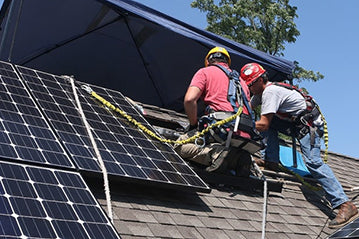
Solar System Installation Steps and Precautions
With the development of renewable energy, more and more people are considering installing a home solar system. However, installing a solar system is not a simple task. In this blog, we will introduce the installation steps and precautions of solar systems to help you better understand how to install a solar system.
Step 1: Connect the controller and battery
The controller and battery are the most important parts of the solar system. Before installing the solar panel, the controller and battery must be connected first. The controller monitors the battery level and controls the flow of current to avoid overcharging or over-discharging. When connecting the controller and battery, be sure to follow the correct polarity and voltage specifications.
Step 2: Install the solar panel
The solar panel is the part of the solar system that collects solar energy. Installing the solar panel requires selecting a suitable location that can receive maximum sunlight. When installing the panel, ensure that it is mounted on a sturdy bracket and use appropriate installation tools to secure it.
Step 3: Connect the solar panel and controller
After installing the solar panel, it needs to be connected to the controller. During the connection process, it is necessary to follow the correct polarity and voltage specifications. In addition, appropriate cables are required to connect the panel and controller, ensuring that the cable is long enough and its quality can withstand the current load.
Step 4: Connect the controller and inverter
The inverter is the part that converts the direct current produced by the solar system into alternating current. When connecting the controller and inverter, it is necessary to follow the correct polarity and voltage specifications. In addition, appropriate cables are required to connect the controller and inverter, and ensure that the cable's quality can withstand the current load.
Step 5: Connect the inverter and the grid
Connecting the inverter to the grid is a key step to allow the solar system to transmit excess electricity to the grid. When connecting the inverter and the grid, it is necessary to follow local regulations and ensure the safety and reliability of the installation and connection.
Precautions:
When conducting electrical connections, make sure to disconnect all power sources and follow the correct procedures for connection.
Pay attention to lightning and overvoltage protection, and use lightning protection and overvoltage protectors.
Thoroughly check all equipment and parts before installation to ensure they are in good condition and follow all safety guidelines and recommendations.
If you are unsure how to install a solar system, seek professional help to ensure safety and correctness.
We hope these steps and precautions will help you. If you have any questions, please feel free to seek help from professionals.

0 comments